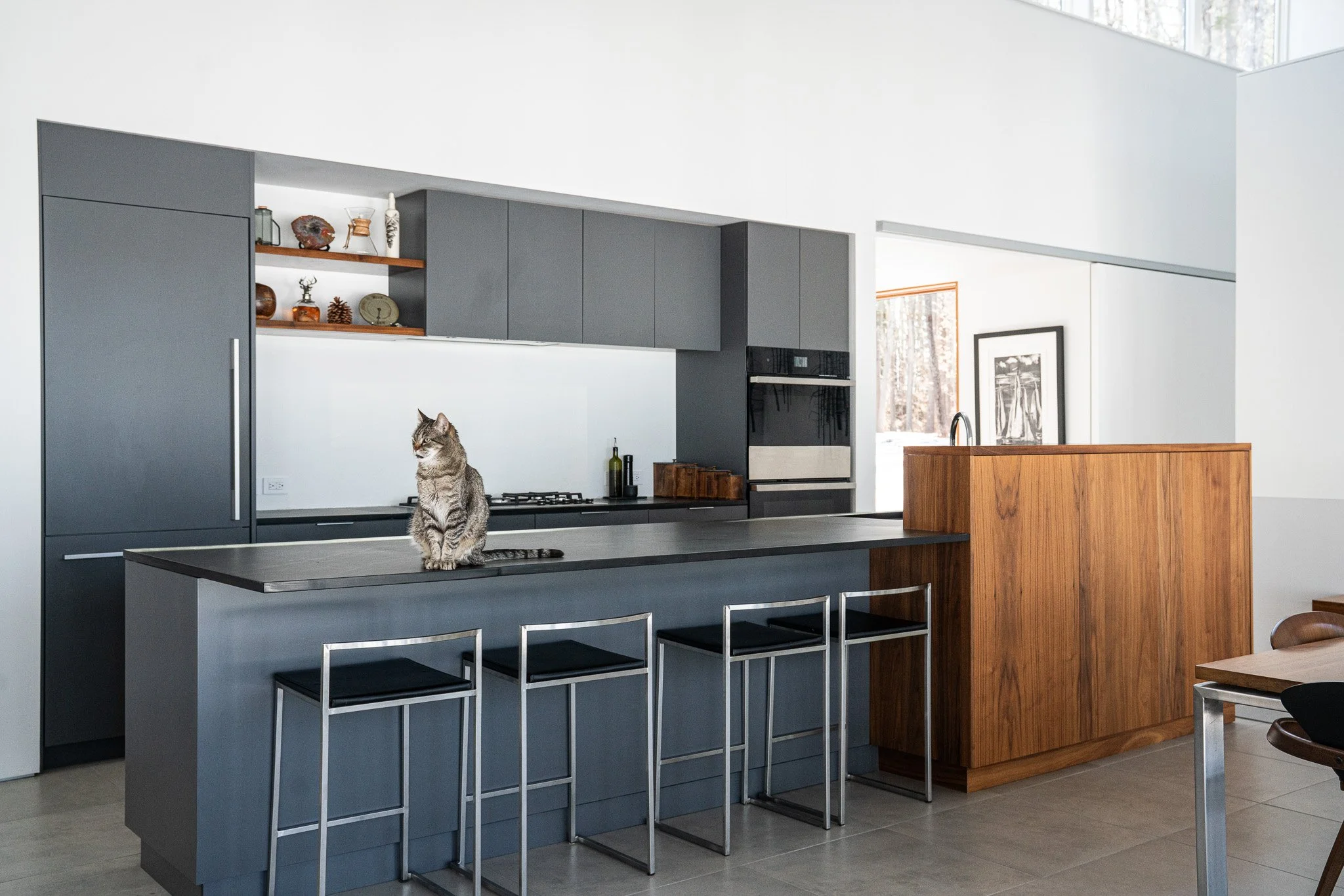Why Wood Still Belongs in the Modern Kitchen
In the age of sleek appliances, minimalist palettes, and high-gloss finishes, it might be tempting to think of wood cabinetry as a relic of the past. But for many modern homeowners and designers, wood remains an essential material—not in spite of modern design trends, but because of how beautifully it complements them.
At Arcadia, we’ve seen firsthand how wooden cabinetry continues to shape kitchen design in meaningful, lasting ways. Here’s why it still holds such an important place in the modern kitchen—and how we help clients bring it to life.
Timelessness That Adapts to Any Era
One of the reasons wood never goes out of style is because it doesn’t really change. While colors, finishes, and layout trends evolve, the natural beauty of wood grain—whether it’s subtle or bold—remains a grounding element in kitchen design. Unlike other features that can quickly date a space, wood feels enduring.
Many modern homeowners appreciate that they can design a kitchen around wood cabinetry and update other elements—like backsplashes or lighting—over time without needing to change the cabinetry itself. Even a slab-door cabinet, which has been a hallmark of modern kitchens since the mid-20th century, continues to feel fresh when paired with the right details.
Species That Set the Tone
Not all wood is created equal, and each species contributes a different tone and texture to a space. Walnut, for instance, offers rich, striking grain patterns—especially when book-matched—that become a focal point in any room. White oak, particularly when rift-cut, creates a more uniform linear grain that feels clean and contemporary. The depth of oak’s grain also means darker stains tend to accentuate texture in beautiful, subtle ways.
In more modern kitchens, we often see walnut used as the hero, paired with natural stone and minimal color for a refined, high-end look. Oak, on the other hand, plays well with bolder accents thanks to its fine grain and versatility.
Balancing Texture in a Modern World
Today’s kitchens often prioritize smooth finishes, clean lines, and tonal consistency. That’s where wood comes in—not to compete with those elements, but to balance them. When paired with sleek metals or polished stone, wood cabinetry offers visual relief. It brings a sense of grounding, preventing modern spaces from feeling sterile or cold.
The key is in the detail. Choosing slab doors, low-profile frames, and uniform stains gives wood a clean silhouette. Skipping ornate designs and heavy glazes helps keep things crisp and current. For clients who want a hint of nature without going all-in, open wood shelving or accent cabinets can soften the space and make it feel more lived-in.
Warmth You Can Feel—Literally and Emotionally
Wood doesn’t just look warm—it feels that way too. There’s a subtle emotional quality to it: it softens the sharp edges of a modern kitchen and helps it feel less like a showroom and more like a home. Clients often don’t realize how impactful this is until the cabinetry is installed. Suddenly, the kitchen feels grounded, calm, and welcoming in a way that painted or laminated finishes often don’t replicate.
Built to Last—And Age Gracefully
A common misconception is that wood cabinetry is harder to care for. But in reality, wood often wears better than its synthetic counterparts. Painted cabinets can chip and reveal primer beneath, and laminate finishes can peel or warp over time. Wood, on the other hand, tends to age more gracefully—small scratches or dents often blend in or can be easily touched up.
And when built well, wooden cabinetry can last through multiple kitchen updates. Clients can re-stain, refresh, or even paint their wood cabinets in the future if their style evolves—making it a surprisingly future-proof investment.
Craftsmanship That Tells a Story
Custom and semi-custom wood cabinetry doesn’t just stand out in terms of looks—it outperforms in longevity. Unlike flat-pack options made from particleboard or MDF, wood cabinets with solid or veneered plywood construction are built to endure. At Arcadia, we work with cabinet lines that offer exceptional warranties and material quality, helping clients invest in craftsmanship that truly lasts.
One of our earliest projects still stands out as a perfect example. The kitchen featured Rift Cut White Oak base cabinets with a warm honey glaze, white uppers that included integrated wooden cubbies, and a black island and pantry wall, finished with wooden shelving details. The wood elements—used strategically on the base, the uppers, and the pantry wall—softened the otherwise stark contrast of black and white. They introduced warmth, texture, and visual rhythm that the clean white cabinetry and geometric white tile floor couldn’t provide on their own. It’s a perfect example of how wood can add richness to a space without compromising a modern aesthetic.
Final Thoughts
Wood cabinetry brings soul into the modern kitchen. Whether it’s the warmth, the texture, or the story it tells through its grain, wood offers something that no synthetic material can match. For those designing a space meant to be lived in—cooked in, gathered in, and remembered—wood is more than just a material. It’s a foundation.
If you’re considering how to integrate wood into your kitchen—whether subtly or as a centerpiece—Arcadia is here to help you find the perfect balance.




